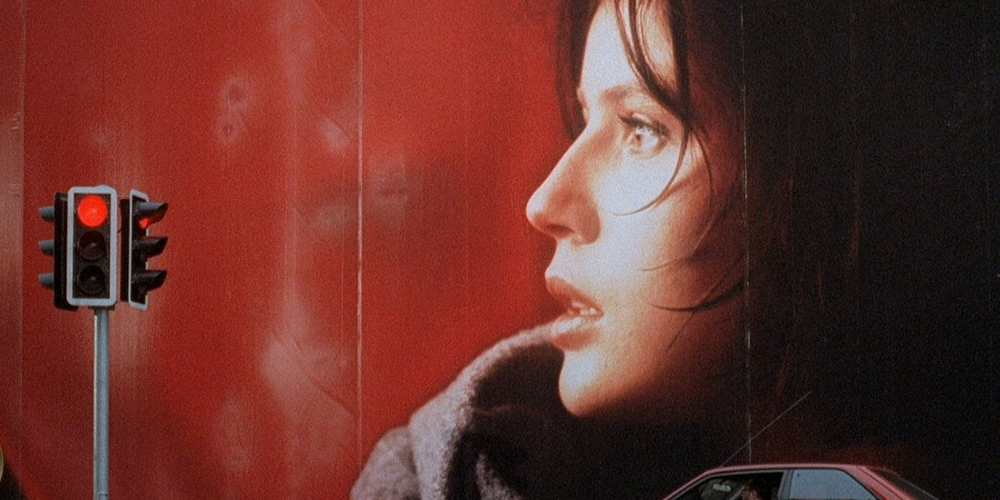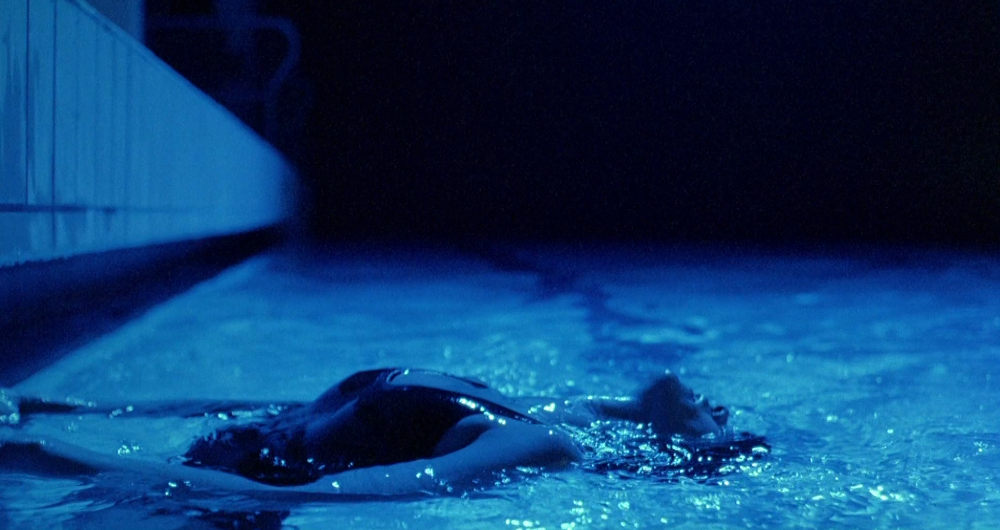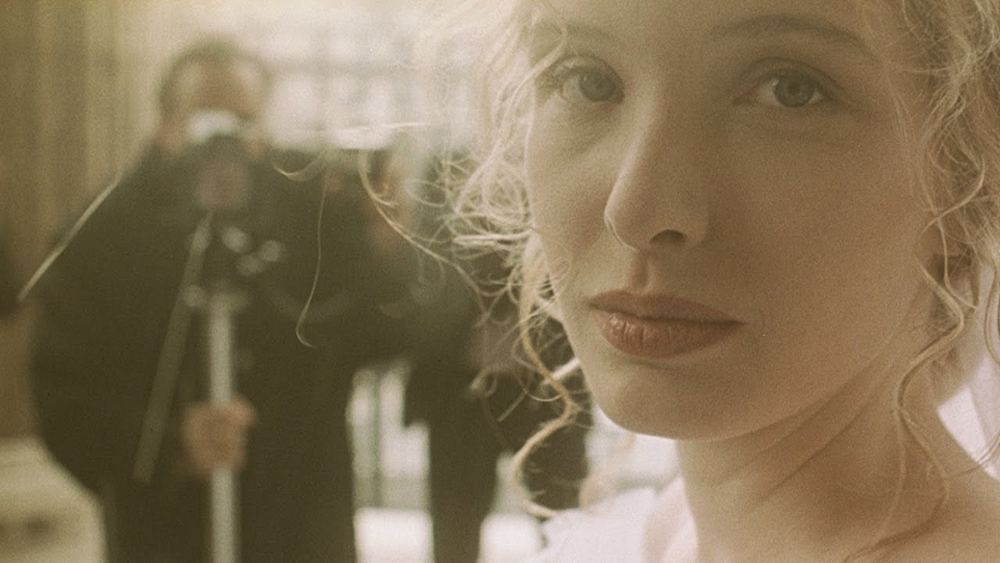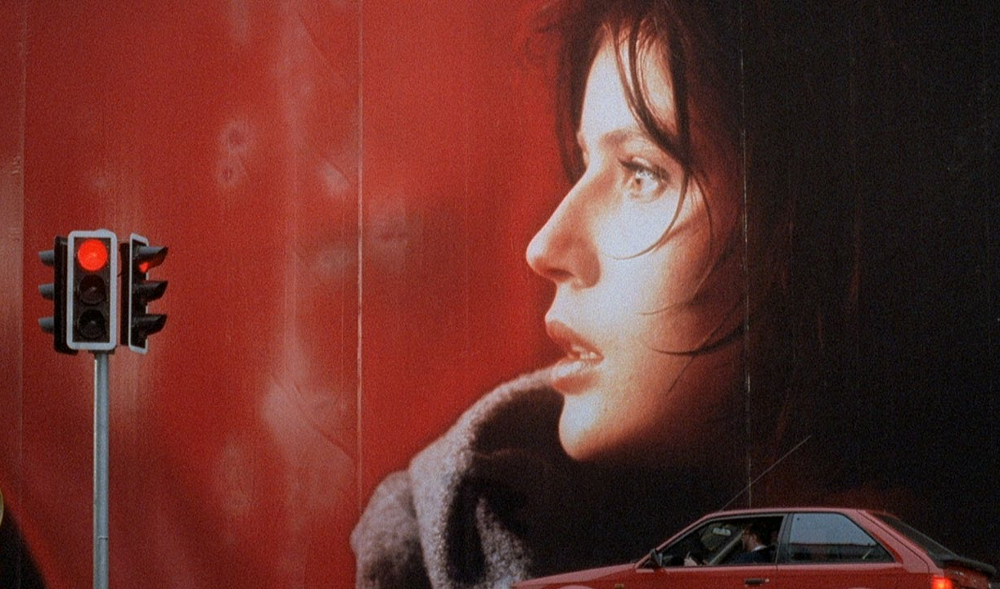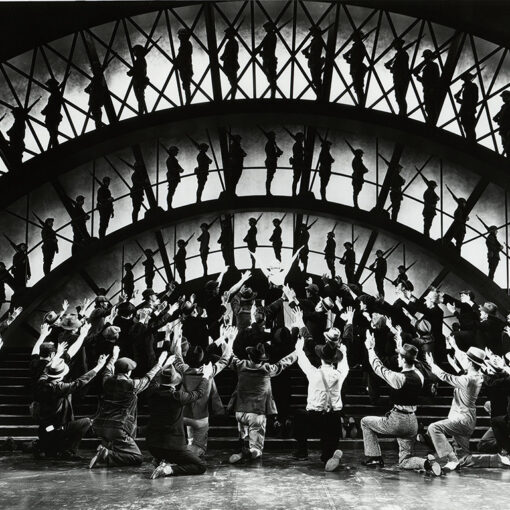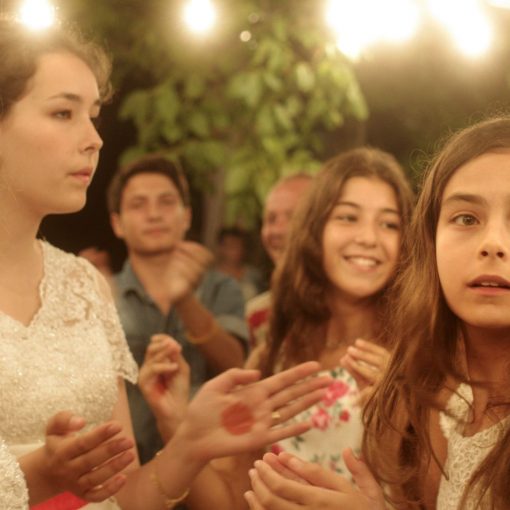Three Colours
I’m no fan of trilogies, but every once in a while one comes along to bust a little dent in my beliefs that creating more of the same is usually just a means to get more money from people. Also, most trilogies tend to start off great but then see a quick decline in quality. Krzysztof Kieslowski proves me wrong on both accounts. His Three Colours trilogy doesn’t seem to be made purely to make money, nor are the films very much related in the typical sense. Usually you’d expect the same characters on different adventures or in another phase of their lives, but not this time. The word trilogy in this case is used simply to say that these films are closely related thematically. It’s quite obvious that the three colours make up the French flag, but what I didn’t know was that thematically they are about the three famous French values liberté, égalité & fratenité (liberty, equality, fraternity). To be honest even looking back I have a hard time figuring out why, but it doesn’t really matter. I managed to enjoy all three films regardless of this.
A few other things that could be said for all three films are that the musical scores by Zbigniew Preisner are absolutely beautiful and really add so much to what is already a feast for the eyes and mind. The acting is spot on by everyone. I can’t think of a single character that felt out of place or miscast. Kieslowski’s use of real life events interwoven into the story makes everything seem so much more real, even though at times it is obvious that these stories are anything but real. What I also found refreshing is that these films refrain from using all of the cliche’s you might expect. It keeps you from ‘knowing’ what will happen next – which is great. All you can do is guess, and you’ll probably be wrong most of the time.
Little disclaimer: If you’re planning to watch one of these films, or all of them (pick this option), please be warned that in order to watch Red you should really watch Blue and White first. It helps in understanding certain parts. Of course the recommended order is Blue-White-Red, but I don’t see why it wouldn’t be possible to watch White first if it happens to work better for you that way. Just as long as Red is seen last.
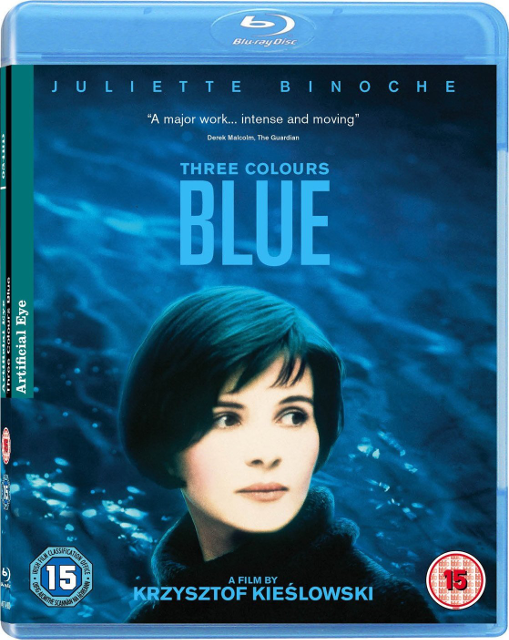 | Original title: Trois Couleurs: Blue |
Rating:  (4.5 / 5) (4.5 / 5) | |
| Year: 1993 | |
| Director: Krzysztof Kieslowski | |
| Duration: 98 min. | |
| Genres: Drama, Mystery, Music |
Blue
This film follows a woman called Julie – played by Juliette Binoche – who has lost her husband and only child in a tragic accident she alone survived. The husband was a world famous composer who was in the process of writing a symphony for something to do with celebrating Europe. Julie has to learn how to deal with this loss, and starts doing so by leaving her entire life behind. She takes an apartment somewhere, takes absolutely nothing with her besides a blue beaded ceiling ornament, tells no one where she is going and continues living. In this film the colour blue plays a big visual role. I’m not sure if it has any particular meaning, but there is blue everywhere, the sky is blue and.. uhm.. no wait. Some things are just blue, but it is obvious that there is an overabundance of blue objects all throughout the film. For instance there is no way that Julie and her husband have a ‘blue room’ in their house by accident. And they could’ve picked any colour, but chose to sometimes tint the film blue like in the scene below.
One thing about Blue that I really loved (and sort of hated throughout the film) is the use of music. The unfinished piece of music plays a big role in the story, and often when it comes up bits of it are played. It is beautiful, but unfinished, so it often just stops when you really want it to go on. Maybe in a way this unfinished piece of music is similar to Julie not having found a way to deal with her loss. Or maybe I’m seeing things that aren’t there, who knows, I’m no expert – hah. One little common thing that returns in all three films is the image of someone putting a glass bottle in a recycling bin on the street. In Blue this happens in the background of a scene and nobody really notices. I’m sure it has some symbolic meaning or whatever, but I have no idea what. I just thought it was a nice gimmick as it seems to be the same moment in time, but it really isn’t. It gave a sense of recognition and correlation while watching White and Red. It sort of links the three worlds together in a way.
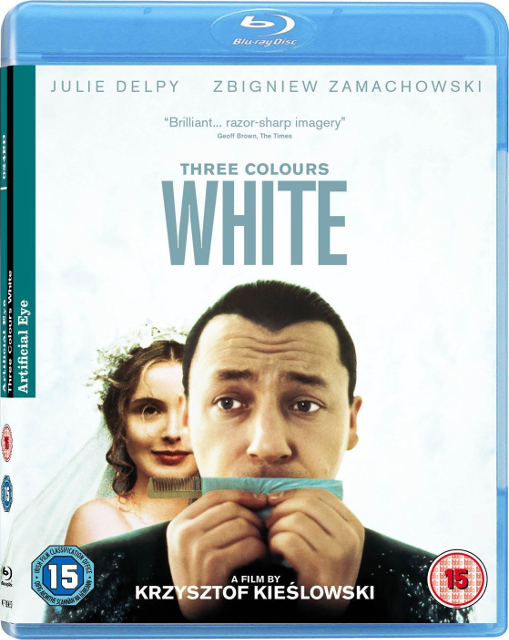 | Original title: Trois Couleurs: Blanc |
Rating:  (4 / 5) (4 / 5) | |
| Year: 1994 | |
| Director: Krzysztof Kieslowski | |
| Duration: 91 min. | |
| Genres: Drama, Mystery, Comedy |
Blanc
And now for something completely different. Three Colours: White is very different from Blue and Red, and as you can tell by the rating I gave it I found it to be the weakest entry in this trilogy. But 4/5 still means it is a great film, so not to worry, this too will be a delight to watch. White features a French woman – Julie Delpy – and her Polish husband – Zbigniew Zamachowski – who are in the process of a divorce. A nasty one at that. The man, named Karol Karol doesn’t seem to be able to ‘perform’ anymore, and the woman, Dominique, seems dead set on kicking him out and keeping all the stuff, money and property to herself. Poor Karol is humiliated, kicked out on the streets and sent back to Poland in a suitcase. All he has left of his old life is a broken white bust of a sculpture of a woman, which he glues back together and takes with him. Of course this story takes place in the winter, as there is snow everywhere. Call me crazy, but again I doubt that this is a coincidence. Lots of white stuff can be found and a flashback to a wedding is shown a few times.
While he is still in France, Karol meets a strange Polish man – Mikolaj – who becomes his friend later on. He also witnesses someone attempting to put a glass bottle in a recycling bin. After a humiliating journey back to Poland he ends up back with his brother. They had a hair saloon before Karol met Dominique and left to France, and this is where Karol slowly puts his life together. Later, Karol and his friend Mikolaj start a somewhat dubious business enterprise and become incredibly wealthy. How does Dominique fit into all this? I won’t tell, but she does. White is sort of a (very) dark tragi-comedy I guess, so no laughs or funny jokes. The story and especially its ending are very satisfying though, and that alone is very much worth watching this entry. The musical score in this film is probably the least impressive of all, but I think acting-wise this one is the best. For some reason though it still feels like White lacks something the others don’t – but I couldn’t tell you what that is.
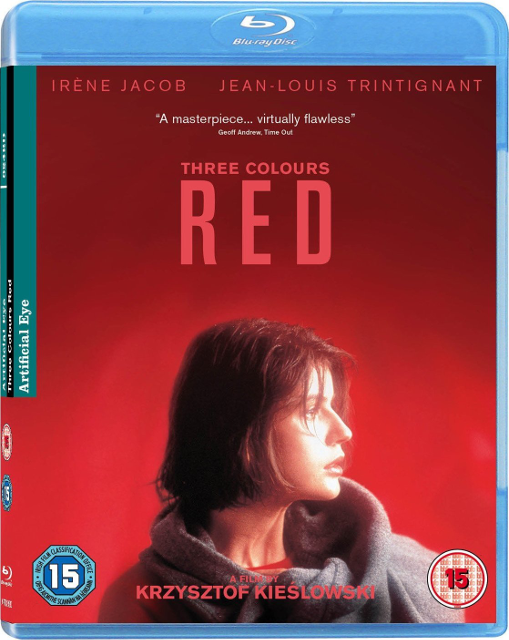 | Original title: Trois Couleurs: Rouge |
Rating:  (4.5 / 5) (4.5 / 5) | |
| Year: 1994 | |
| Director: Krzysztof Kieslowski | |
| Duration: 99 min. | |
| Genres: Drama, Mystery, Romance |
Rouge
Saving the best for last – Red for me was the best and most interesting film. It feels a little surreal, which I generally like, but it also feels humane and intimate. The colour red is also overabundant. Red furniture, paint, books, red cars and a lot of bright tail lights of said cars. Red starts with a young woman named Valentine – played by Irène Jacob – on the phone with her boyfriend who is in London doing stuff off screen. on her way back home after a photo shoot, Valentine accidentally runs over a dog. She takes the dog back to its owner, but he doesn’t want her back. A visit to the vet teaches her that the dog is pregnant, but she keeps her anyway. One morning the dog runs away and ends up back at the house of her old owner. Not much later Valentine discovers that the man is spying on telephone calls made by the people living near him. In one particular case, she overhears a husband cheating on his wife over the phone. When she wants to confront him, she finds the man’s child daughter listening on a second phone (ouch!) and decides not to intervene. The old man tells her it wouldn’t have mattered anyway, as that family’s life would go to hell one day anyway. Also, it turns out that he is a retired judge. During visits Valentine makes to this man they develop a bond. They talk about some of the people the man spied on, but also about their own lives and loves.
As far as story goes I think Red wins. There are many story lines developing at the same time, and they all serve a purpose to the film as a whole. There is also the scene of someone attempting to put a bottle in a recycling bin, but this time the person is helped by Valentine. So there’s progress in what happens here. It goes from not noticing it at all, watching it happen but doing nothing and actually helping out. There is also yet another scene of the courthouse. I haven’t mentioned that yet, but in each of the films there is a scene in the same courthouse. In White we even see Julie from Blue entering the courtroom where Karol and Dominique are having their case handled. I think Red also refers to Blue by showing someone from that film, but I couldn’t tell for sure. Either way, I’m obviously oblivious to the meaning of these things, but maybe someone else knows and cares to share. As Red comes to and end, there is so much more to think about. What does it mean? What does it imply? It basically begs you to watch the films again, to see things you might have missed the first time. The final shot is one to remember.
Misc
Whew, so that was a pretty amazing trilogy, though a slightly different one from what I am used to. There is no progressing story like in Star Wars or The Human Condition. Nor are they mostly unrelated films about the same characters, like Toy Story or Indiana Jones. After finishing this trilogy, Kieslowski announced his retirement. He got about two years to enjoy it, as in 1996 he passed away due to a heart attack and subsequent surgery. Luckily we have these three films, but he also made some other very interesting stuff worth checking out:
- 1988 – A Short Film About Killing
- 1988 – A Short Film About Love
- 1989 – The Decalogue
- 1991 – The Double Life of Veronique
For those interested in buying some excellent copies of the Three Colours trilogy, I can recommend the box set by Artificial Eye (DVD or Blu-ray). Subtitles are in English only, but the quality is great and each disc has quite a few extra’s. Also be aware that this is B-region (Europe) only. I don’t very often rewatch films, but I can already say for certain that these three discs will find their way back into my player some day.
